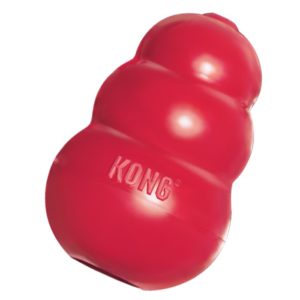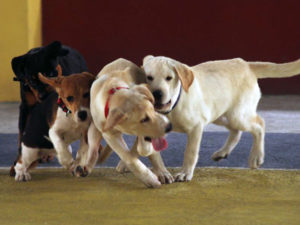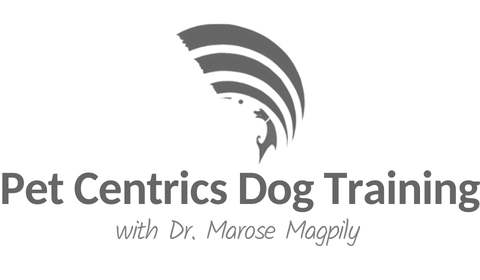Puppies bite, it’s what they do. And while some puppies will cease and desist at a mere verbal reprimand, others are not so easily controlled. New puppy owners, thus, find this behavior to be extremely bothersome and dangerous, particularly because of the fear of rabies infection – a topic which merits an article all to itself . Often, owners look for quick and easy solutions, and have not only considered but actually used methods that are both absurd and incredibly inhumane. If you can believe it, I’ve had owners ask me if I thought it was a good idea to let their puppy wear a muzzle until it got older and supposedly more mature, and I’ve met many who resorted to clipping their puppy’s canines. Most of the time, however, owners will resort to caging their puppy and avoiding further interactions. In my opinion, this is just as cruel as a muzzle or clipping teeth. These are NOT solutions that any pet professional will or should recommend.
So, what then is a puppy owner to do under the assault of these needle-sharp menaces known as puppy teeth? Here are some solutions that may work for you:

1. Provide appropriate outlets for chewing and biting
Biting and chewing are part of the normal repertoire of puppy behaviors. A dog’s mouth is used to interact with the world and puppies especially are very inquisitive and will put their teeth on anything that they can taste, chew or rip to shreds. These activities provide them with loads of mental and physical stimulation – in other words, it’s lotsa fun! – plus they play a huge role in puppy learning.
It’s up to us, their human guardians, to enforce rules about putting teeth on humans and to direct their inquisitiveness and playfulness to appropriate items and activities.
By “appropriate items” I mean chewtoys that are correctly sized, indestructible and often hollow so that you can stuff them with edible goodies. If properly prepared, such chew items can keep a puppy busy for hours at a time. Provide your puppy with at least 3-4 different chewtoys so he can keep his jaws and teeth happily occupied.
2. Always supervise your puppy and play with your puppy in a confined space
A young puppy that is still learning the rules of the house should never be allowed to run free in areas with accessible No-No items (furniture, shoes, slippers, carpets, etc.). A minute alone with these and you can say goodbye to them forever! If you want to let your puppy explore, make sure he is supervised so that you can stop him before he gets into trouble. Also prepare a play area for your puppy like an exercise pen or a closed off puppy-proofed room. Here, you’ll be teaching your puppy the rules about biting and the appropriate games that he can play with humans.
3. Teach appropriate games with rules
Any games or interactions between your puppy and you must be guided by the following rules:
- The game only starts when you say, and the game ends when you say
- Tug is a great game to play with your puppy. When playing Tug your puppy should be taught the meaning of cues such as “Get it!” or “Tug!” that mark the start of the game, and “Out!” that mark the end of the game and to tell your puppy that he should release a toy.
- The puppy must learn to relinquish items in his possession when asked
- Puppies should not guard items from you. Teach him to accept having items being taken from him by practicing object exchanges, that is, you want to frequently trade a low value item that he has for a high value item that you have.
- Teeth are not allowed on human skin, hair or clothing
- If a puppy makes a mistake and breaks this rule, end any game or interaction between the two of you immediately by either freezing, turning away from him, or leaving him alone in the play area for a short time out.
It’s not always an easy task to teach these rules to your puppy, and in the beginning he and you will likely make many mistakes. But stay consistent about maintaining these rules, and makes sure that everybody in your family who’ll be interacting with your puppy knows and enforces the same rules.
4. Let your puppy play with other puppies

Playtime with other puppies is important in the development of a dog’s social behaviors and is also an excellent venue for your puppy to learn a lot about bite inhibition or regulating his bite force. During play, a yelp from a puppy and the refusal to continue play teaches the offending puppy that his bite was too strong and that there are consequences for it – he loses his playmate! However, if your puppy is a bit of a bully and won’t take cues from the other puppies to restrain himself, then it’s up to the human to intervene and put him in a more suitable playgroup – groups of older pups or older balanced dogs than himself are usually better for teaching him manners. Controlled play sessions can be provided in some well-organized dog training classes or if you have friends with puppies invite them to join in organized parties specifically designed for puppy fun!
5. Teach Bite Inhibition instead of immediately teaching a puppy not to bite
This is a tricky thing to emphasize to new puppy owners because it requires a certain amount of actually allowing the puppy to mouth and put his teeth on you – again the fear of rabies infection sets in. Why, you may ask, would we want to allow any puppy biting if our goal is to stop the biting altogether? This is because we want to teach Bite Inhibition rather than immediately teaching No Biting.
Bite inhibition refers to your puppy learning to regulate the force of his bite. All dogs may at some point feel the need to bite or snap when startled or when feeling threatened. Imagine a scenario at the veterinary clinic, or should you accidentally step on your dog’s tail. If pressured to bite, a dog WITHOUT bite inhibition – regardless of how nice he is – will surely do a lot more damage than a dog WITH Bite Inhibition. This is why bite inhibition is important.
Bite inhibition is taught by having play and training sessions with the puppy wherein you allow him to mouth you. This should be done in a controlled setting and when the puppy is NOT in a hyperexcited state. During initial sessions, yelp or give a time-out whenever your puppy exerts enough force to cause you slight pain. This gives the puppy feedback about the intensity of his bite. In succeeding sessions, you will be a little more sensitive and react to less and less pressure from puppy teeth on you. Over time and with repeated sessions, your puppy will learn how fragile human skin is and how he should be careful how to interact with us.
Puppy biting is definitely one of the greater challenges during the early part of life with your new companion dog. No doubt, there will be times when you’ll feel extremely frustrated with your puppy. But it is important, even then, not to strike your puppy for biting you. While this may work with some puppies, you are not creating a relationship of trust between yourself and your dog. Some dogs may even become more excitable and even aggressive when challenged with physical force. Instead, stick to the solutions presented above. They may not produce results in a day, but with time, patience and a little bit of planning you are sure to see an end to your puppy’s biting and will have a much more pleasant relationship with him as he grows older.

